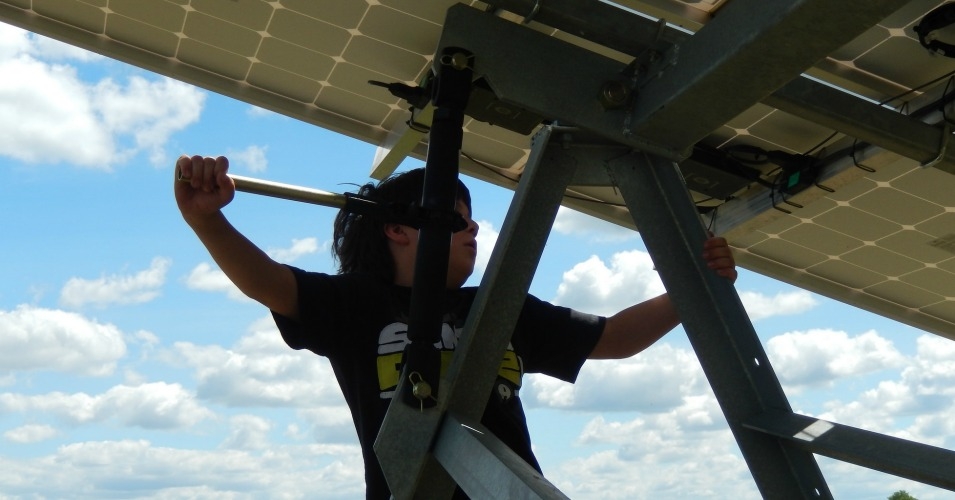Chilling reports from experts in the field indicate that official statements about the amount of radiation leaked are probably severely understated. “The Japanese industry assured the Japanese public that these reactors could withstand exactly these kinds of events. This is not a surprise, what’s happened at Fukushima. This was predicted. We’ve predicted similar things here in the United States, especially at those reactors in California. They are going for license extension at Diablo Canyon. This is unconscionable, especially in light of what’s happened here.”
AMY GOODMAN: You have said, Kevin Kamps, that a cover-up is a huge part of this story, as it was with Chernobyl. Why?
KEVIN KAMPS: Well, I mean, as Harvey indicated, if the U.S. Navy—and as you reported—if the U.S. Navy, which is a hundred miles away, has to move an aircraft carrier away from the shore because the radioactivity levels are of concern, then all of these assurances by Tokyo Electric Power Company and the Japanese government that everything’s really OK—I mean, a statement made two days ago by the chief spokesman for the government, the secretary of the cabinet, was that the evacuation is underway, and the wind is blowing out to sea, so everything is really going to be OK. Well, we have indications that the wind direction may change towards the mainland of Japan. So, those false assurances are not helping the situation.
And another question that needs to be asked is, well, if the wind is blowing out to sea, what’s in that direction? Well, the United States is in that direction. And we see, again, the U.S. Nuclear Regulatory Commission saying no harmful level of radioactivity could reach the United States. While we’re in the middle of this crisis, a new reactor is now melting down. How did they determine that the containments are going to hold? How did they determine that the radioactivity will not blow in large quantities to the United States?
AMY GOODMAN: The effects of radiation on humans, Arnie Gundersen?
ARNIE GUNDERSEN: It’s too early to tell, but as your previous speaker said, you know, they tested—they talk about 160 people that have been contaminated. That’s all they’ve tested. Basically, everything they’re testing is coming up contaminated in that inner couple of miles around the plant. You’ve got radiation being detected 60 miles to the north in a Navy helicopter, a hundred miles to the east on a Navy aircraft carrier. So, it’s not clear to me that that cloud is not looping around and affecting Japan. And, of course, I think the worst case, as Mr. Kamps suggested, is that the fuel pools on these reactors, that sit very high, and they’re designed just like the Vermont Yankee one, if the fuel pools are not cooled, they will melt down, in which case we’re going to have Chernobyl on steroids.
HARVEY WASSERMAN: None of the reactors in the United States are insured. None of the reactors in the United States are insured beyond $12.4 billion. If such an accident happened here, the burden, the economic burden, will fall directly on the taxpayers and on the victims, not on the owners of the plants.
Additionally, there is no news about the waste pools containing spent fuel rods which also require cooling for several years.
Something that has not gotten much mention yet are the pools of high-level radioactive waste at these very same reactors, which also need cooling. They need electricity to cool, to circulate the water with circulation pumps. And each of the—well, two of these three reactors have suffered explosions, as your guests may have seen online in videos. And the pools that hold the high-level radioactive waste are located above, just slightly above, and to the right of the reactors. So, our hope and our prayer at this point is that not only the reactor itself, the containment around the reactor, but also the pools, which contain massive amounts of radioactivity, have somehow remained intact. That’s what the officials are saying. As Harvey said, we don’t know whether to believe them or not.
In the pools, you have a lot of radioactive waste, which contains a lot of hazardous radioactivity. And now, because those explosions took place at two of those reactors, that is open to the sky at this point. There is no roof or walls over the pools.
Meanwhile, Obama aide says there is little chance radiation will effect US citizens.
There is little chance that harmful radiation from Japan’s damaged nuclear plants will reach American land, said Nuclear Regulatory Commission chairman Gregory Jaczko.
“Based on the type of reactor design and the nature of the accident, we see a very low likelihood — really, a very low probability — that there’s any possibility of harmful radiation levels in the United States or in Hawaii or any other U.S. territories,” Jaczko told reporters at the White House.
NHK commentor: Suppression chamber used only in emergencies. “We can assume some damage, some crack.”
UPDATE: Comparison: Chernobyl was 3,579,000 milli sieverts, Fukushima #3 is 400 milli sieverts. 3 Mile Island radiation was around 50 milisievert/h locally.


